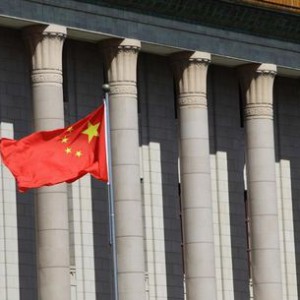On August 1st, the U.S. Department of Commerce announced that they would be adding forty-four Chinese entities (eight entities and thirty-six subordinate institutions) to the Entity List which already included many electronic and aviation research institutions. The Bureau of Industry and Security (BIS) accused 17 companies of illegally purchasing goods and technologies for unauthorized military use in China and accused 27 companies of “unacceptable” risk of using or transferring U.S. goods for military purposes in China.
On August 3rd, China’s Ministry of Commerce issued a statement on the U.S. Ministry of Commerce’s inclusion of Chinese entities into the Entity List, stating that China’s position against the U.S.’s tendency to impose unilateral sanctions on Chinese entities has never changed. China urges the United States to take concrete measures to ease its export controls to China, protect and promote high-tech trade and cooperation between enterprises of both countries, and safeguard the legitimate rights and interests of enterprises.
This reminds us of ZTE, the Chinese telecommunications equipment company, but it is based on different U.S. control provisions. In 2016, ZTE illicitly re-exported controlled items to Iran in violation of U.S export laws. After that, the Bureau of Industry and Security (BIS) added the ZTE corporation and three affiliated entities to the Entity List.
According to BIS, in the last five years (2013-2017) the number of cases punished for U.S. export controls is about 100 per year. The proportion of cases involving Iran and China accounted for up to 50%.
This article will not discuss China’s U.S. trade war and other sensitive political topics, but will only introduce U.S. export controls, what risks multinational corporations (MNCs) will face and how to defend against it.
- Applicable U.S. export control law and regulations
- At present, U.S. export management is mainly divided into two systems: civil and military. Civil subjects are mainly governed by the Bureau of Industry and Security (BIS) through the Export Control Reform Act (ECRA) of 2018, and the Export Administration Regulations (EAR), while military projects are mainly governed by the Directorate of Defense Trade Controls (DDTC) according to the Arms Export Control Act (AECA) and International Traffic in Arms Regulations (ITAR).
- To clarify specific export-controlled goods and detailed rules for the implementation, relevant government departments have further formulated relevant rules and guidelines according to the above laws and regulations, such as the Commerce Control List (CCL) and the Commerce Country Chart(CCC) formulated by the U.S. Department of Commerce, and the United States Munitions Lists (USML) formulated by the U.S. State Department, etc. These documents mainly detail the products and technologies under control and countries that are restricted or prohibited exports.
- Scope of export control
- Items (commodities, software, and technical data) that are of U.S.-origin, wherever located; all items in the United States, regardless of origin and foreign-made items containing export-controlled U.S.-origin components are all subject to EAR or ITAR by U.S. export controls.
- From an export-controlled transactions perspective, exports, transit, transshipments and re-export are all to be covered.
- In this article, we only talk about tangible goods in actual shipment for commercial use which are the most common scenarios big MNCs face. Export and tangible goods deemed as for military use or applications under ITAR will also not be discussed this time.
- Key factors in U.S. export control
- The core supervision of EAR is to restrict or prohibit any person or any company trade with specific countries or specific companies for those controlling related goods. Therefore, four critical factors that govern every export transaction are:
- What is the item being exported?
- Where is the item going?
- Who will use the item?
- What is the end use?
- Every part, material, and finished good must be classified to know the type of control that it will be subject to. As mentioned above, EAR controls the export and reexport of most commercial items. Export licensing is under the main supervision of the EAR. Items are on the CCL and have specific export control classification Numbers (ECCN) to determine whether an export license is required from the Commerce Department. Is the item” specifically designed”, modified, or adapted for military or nuclear end use? Is the item a dual use licensable product? If not listed on the CCL, is it classified as EAR99 (No license required).
- ECCN has 5 characters which represent the category, the group and the reason for control. For example, ECCN 3A001, the first number 3 means Category 3- “Electronics”, the second letter A means the group A- “Equipment, assemblies and components”, the third to fifth numbers 0 means the Reason for control- “National Security”. The ECCN, unlike Harmonized Tariff System (HTS) where a computer will always be a computer, will change based on the level of computer and the encryption capability. Thus, these export control classification numbers are the baseline for export control compliance.
- Once the ECCN has been defined, according to the detailed reason of control, items must be cross checked against the country of destination in the Commerce Country chart to further determine the required license need.
- Restricted party and country embargo screening is also the process of determining whether the U.S. exporter is permitted to sell to the foreign buyer. EAR categorizes different countries into ABDE, 4 groups for destination control. The countries in group A are the strategic partners with the U.S. Group B countries are those less restricted countries and regions, for example, Hong Kong. China (PRC) is in group D, countries of concern. Group E are embargo and sanctions program countries which are Syria, North Korea, Sudan, Cuba and Iran. U.S. products are prohibited to export/re-export to an embargoed country except for humanitarian purposes when permitted by the U.S. government.
- Moreover, U.S. companies are also restricted or prohibited from exporting to parties contained in the Denied Persons list, Entity List and Unverified List. The Entity List mentioned here refers to the list of 44 Chinese enterprises listed by the United States as previously mentioned in this article. The Entity List[1] is a “blacklist” and companies included in the list will face stricter licensing supervision. Once companies are included in this list, they will be deprived of trading opportunities with the relevant enterprises in the United States. When exporting, re-exporting or transferring export-controlled goods to enterprises included in List of Entities, whether the sanctioned enterprises are buyers, intermediate consignees, final consignees or end users, they must have permission from the U.S. government. No exceptions are applicable to the export, re-export or transfer of controlled goods by the sanctioned enterprises.
- License exception
- License exceptions are also available to use when enterprises have low value shipments(LVS), Group B countries(GBS), and or Civil end use (CIV), etc. Information on license exceptions can be found in EAR part 740.
- Fines and penalties for violations
- The EAR may be enforced both criminally and civilly. Maximum criminal penalties are 20 years in jail, a $1 million fine, or both. Maximum civil penalties are the greater of $250,000 or twice the value of the transaction, per violation. Furthermore, other penalties also will occur, for example: loss of export privileges and suspension of government contracting rights. Corporate integrity and reputation also will be damaged.
Suggestions for multi-national corporations to mitigate risks for Chinese import and export:
- Fully understand U.S. export control regulations, we strongly suggest you set up an export compliance team with knowledgeable staff that can ensure compliance of all your export activities.
- Issue internal export control guidance, review logistics flows, add ECCN check into supply chain to avoid any prohibited products from being exported to China or re-export from China (pay attention to de minimis rules).
- Provide internal training and Involve your supply chain partners.
- For example, training purchasers to ask U.S. suppliers to notify whether the order items are considered restricted or prohibited, and subject to export licensing under any applicable laws. Additionally, when conducting training of your sales team, ask clients for end user and end use notifications.
- Integrate export control related software with ERP for black list screening or ECCN classification management.
References:
Federal Register. Addition of Certain Entities; and Modification of Entry on the Entity List. 08/01/2018. https://www.federalregister.gov/documents/2018/08/01/2018-16474/addition-of-certain-entities-and-modification-of-entry-on-the-entity-list
Bureau of Industry and Security U.S. Department of Commerce. A Rule by the Industry and Security Bureau BIS Adds ZTE Corporation and Three Affiliated Entities to the Entity List. https://www.bis.doc.gov/index.php/about-bis/47-about-bis/newsroom/1012-bis-adds-zte-corporation-and-three-affiliated-entities-to-the-entity-list
Export.gov. Consolidated Screening List. 1/31/18.
Bureau of Industry and Security U.S. Department of Commerce Penalties. https://www.bis.doc.gov/index.php/enforcement/oee/penalties
[1] Entities who have engaged in activities that could result in an increased risk of the diversion of exported, reexported and transferred (in-country) items to weapons of mass destruction (WMD) programs.






